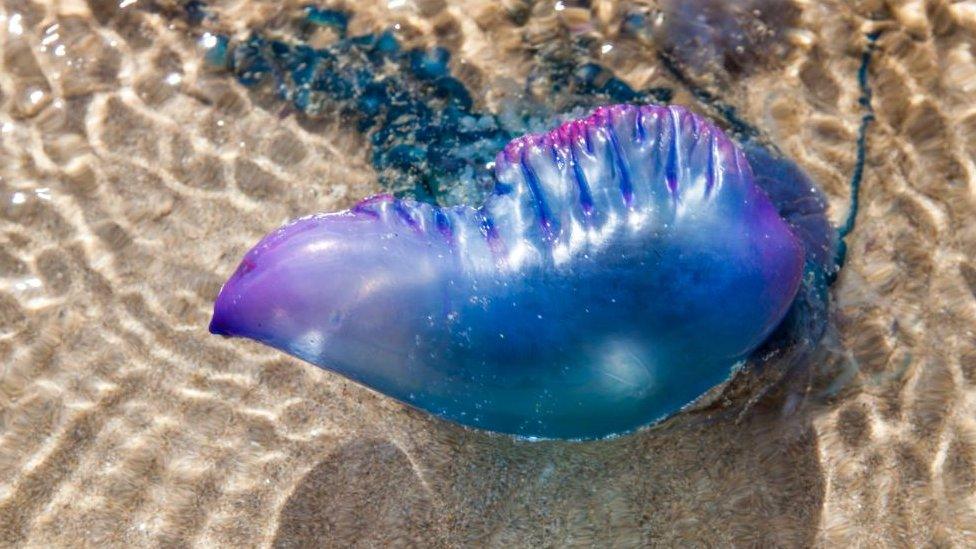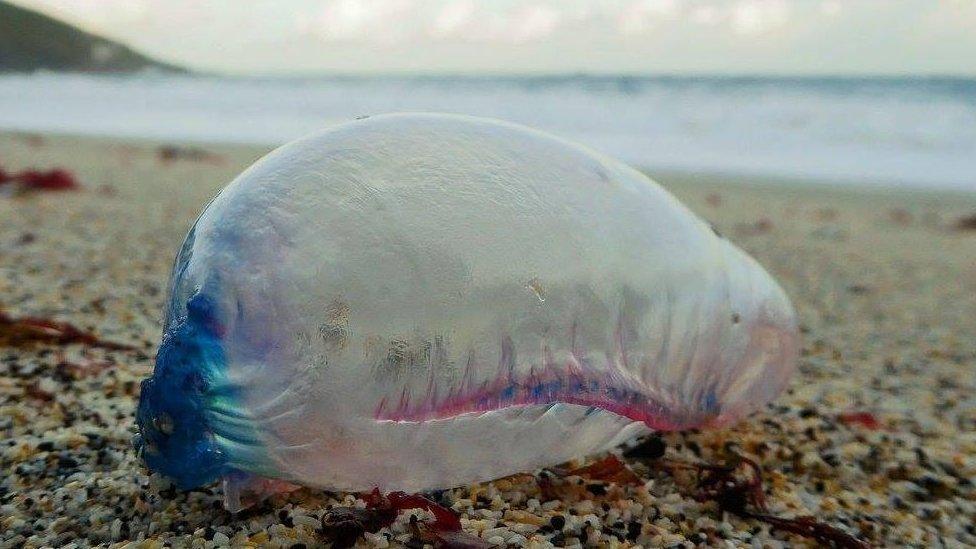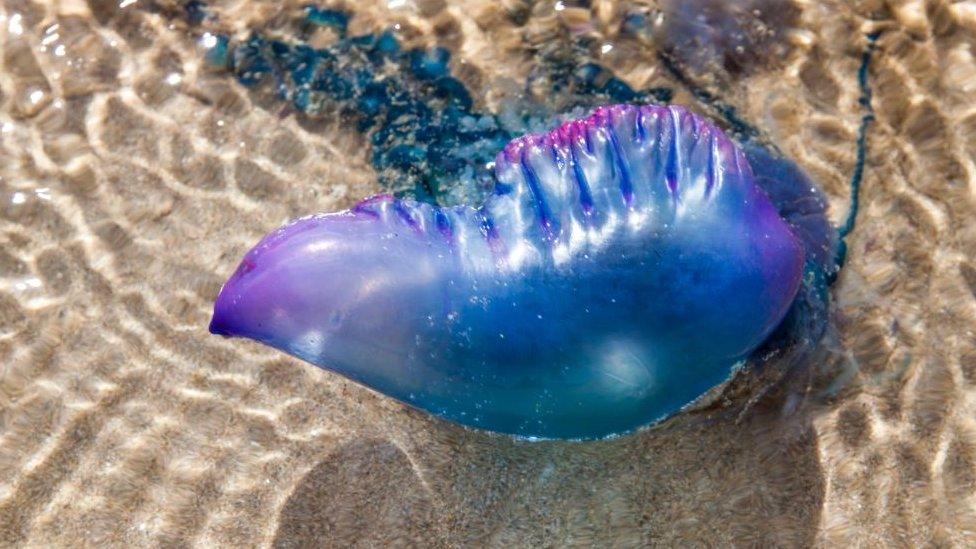Portuguese man-of-war spread along English Channel coast
- Published

There have been reports of the creatures in Dorset, Devon, Cornwall and Wales
An invasion of potentially fatal jellyfish-like creatures has spread along the English Channel.
It amounts to the greatest number of Portuguese man-of-war recorded in the UK since records began in 2003, the Marine Conservation Society (MCS) said.
They were first spotted in Cornwall and have been seen as far east as Milford-on-Sea in Hampshire.
The MCS said it had received reports of more than 2,000 of the organisms, which have long purple tentacles.
Your Portuguese man-of-war questions
Dr Peter Richardson said there had been reports of them in Dorset, Devon, Cornwall and Wales.
"It's the biggest we have ever recorded and they are still coming in," he said.

What is a Portuguese man-of-war?

The man-of-war can be tempting to children because it looks like a deflated balloon
The (Physalia physalis) is not a jellyfish, but a floating colony of organisms dependent on one another for survival
Its gas-filled bladder (sometimes known as the sail), enables it to float on the ocean surface and drift with the current
Its sting - delivered from tentacles which can reach up to 50m below the surface - is extremely painful for humans and can be fatal in rare circumstances
Hundreds of swimmers are stung every year, especially when huge numbers appear in coastal waters

"The last really big sighting was in 2012. They spread further in 2012 but we have had greater numbers this time."
Dr Richardson said being open ocean animals, they were very difficult to study, making it hard to tell if there had been a population increase.
He said: "It will be down to a combination of factors [including] the extreme weather we've had with the hurricanes. They are not supposed to be here."
If symptoms become more severe, or a sensitive part of the body has been stung, you should seek medical help.
- Published13 September 2017

- Published13 September 2017

- Published12 September 2017
